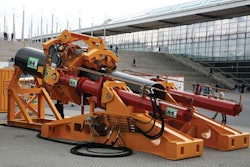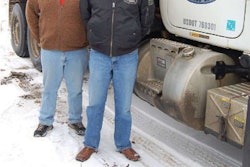In order to adequately support Maine’s existing industries and provide for additional economic growth, the state will need to make numerous improvements to its surface transportation system. This is according to a new report released today by TRIP, a Washington, DC based national transportation research organization.
TRIP’s report, “The Top 50 Surface Transportation Projects to Support Economic Growth and Quality of Life in Maine,” identifies and ranks the projects needed to provide Maine with a transportation system that can support the increased movement of people, goods and resources throughout the state. The most needed surface transportation improvements in Maine include 35 projects to build, expand or modernize highways or bridges, five projects to improve rail or public transportation, five maritime or port projects, three multi-modal projects, one aviation project and one project to improve the state’s trail system. These improvements would enhance economic development opportunities throughout the state by increasing mobility and freight movement, easing congestion, and making Maine an attractive place to live, visit and do business.
According to the TRIP report, the most needed projects for the state’s economic growth are as follows:
A full list of needed projects, descriptions and their impact on economic development can be found in the appendix of the report.
“Among the most significant challenges going forward will be to change a culture of complacency as it relates to lives lost on our roadways. AAA envisions a transportation system with a comprehensive approach to safety which includes solutions that lead to safer drivers driving safer vehicles on safer roads,” said Pat Moody, public affairs manager at AAA Northern New England.
Enhancing critical segments of Maine’s surface transportation system will boost the state’s economy in the short-term by creating jobs in construction and related fields. In the long term these improvements will enhance economic competitiveness by reducing travel delays and transportation costs, improving access and mobility, improving safety, and stimulating sustained job growth, improving the quality of life for the state’s residents and visitors.
Sustaining Maine’s long-term economic growth and maintaining the state’s high quality of life will require increased investment in expanding the capacity of the state’s surface transportation system, which will enhance business productivity and support short- and long-term job creation in the state.
“Maine can’t get where it wants to go – in both a literal and an economic sense – without an efficient transportation system,” said Will Wilkins, executive director of TRIP. “It is critical that Maine’s transportation system is adequately funded at the local, state and federal level. Congress can take an important first step by passing adequately funded federal surface transportation legislation, which has been delayed far too long. Thousands of jobs and the state’s economic well-being are riding on it.”
TRIP ranked each transportation project based on a rating system that considered the following: short-term economic benefits, including job creation; the level of improvement in the condition of the transportation facility, including safety improvements; the degree of improvement in access and mobility; and the long-term improvement provided in regional or state economic performance and competitiveness.














